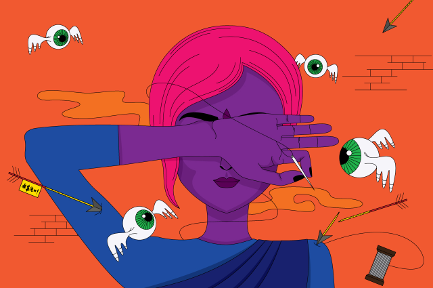Introduction
While the surveillance powers of the Indian government and its agencies are continuously expanding, most people still seem to think that this is not something that affects them. If you have not done anything wrong, you have nothing to hide, right?
Not quite. And women would know. Although the digital age may have further deepened the scrutiny to which women are subjected, women have always been under stringent surveillance - by actors ranging from partners and parents to the state. And this has shaped, and harmed, women’s lives in multiple ways.
What can be learned about surveillance from gendering it, then? And what do these insights imply for the fight for stronger human rights protections in the face of surveillance more broadly?
Welcome to Gendering Surveillance.
Case studies

‘Chupke, Chupke’: Going Behind the Mobile Phone Bans in North India
Since 2010, a number of khap panchayats across north India have pronounced bans on mobile phone use for young women. What drives such orders? Are they really effective? And how do young women themselves respond to the bans and the underlying anxieties? We went to Haryana and western UP to find out.

A Handy Guide to Decide How Safe That Safety App Will Really Keep You
Imagine a world where an army of women’s safety apps scoops you away from danger, and delivers you to safety? That’s the promise made by these apps. How well do they measure up against their own claims? Let’s look at a cackle of apps that act as surveillance assistants, leak your data and look smug, while purporting to keep you safe.

Caution! Women at Work: Surveillance in Garments Factories
Garment factory workers, predominantly women, work in stressful conditions in an exploitative industry where the pay is low. Read on to find out what CCTV cameras have done to the dramatic imbalance of power between workers and the factory management, and what role they can play in workers’ fight for an equitable workplace.
Some theory
In the introduction to this site, I explained why we decided to look at surveillance through a gendered lens. But once you have decided to do so, how do you gender surveillance? Two different yet connected frameworks have been especially valuable for our work. In the following two sections, I will share those theoretical insights, and the questions they force us to ask. In the final section, I will then look at the implications of these questions, and of the practice of gendering surveillance, for the struggle against the harms of surveillance more broadly. As will become clear, if we are to counter the harms of surveillance effectively, fighting for stronger privacy protections alone will not be enough.
